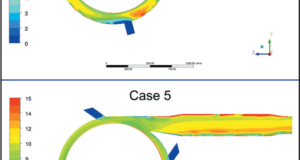Confusion in Maintenance Philosophies?

Torbjorn Idhammar, IDCON
Are you on some type of diet? If so, maybe you are on one of the top 10 diets of 2018. According to US News and World Report, the top 10 diets are: Dash Diet, Mediterranean Diet, the Flexitarian Diet, Weight Watchers, MIND Diet, TLC Diet, Volumetrics Diet, Mayo Clinic Diet, Ornish Diet, and number 10 is The Fertility Diet.
I become anxious and uneasy just reading these top 10 diet names. My head is spinning! I’m thinking; “Am I supposed to know what each diet entails? Why are there so many diets? Why are there words I don’t know the meaning of in the diet name? How are these diets different? Can’t the doctors and experts agree on one best way to lose weight? Wait, do I even need to diet?”
I think the situation is similar when it comes to reliability and maintenance philosophies.
Let’s see… we have Asset Management (AM), Lean Maintenance, Total Productive Maintenance (TPM), Total Quality Maintenance (TQM), Results Oriented Reliability and Maintenance (RORM), and Six Sigma. There are also tools to help us in maintenance that are often confused with reliability philosophies such as Reliability Centered Maintenance (RCM), Preventive Maintenance Optimization (PMO), Kaizen events, 5S, CMMS Systems, etc. Some of the same questions I have about the diet list often arise when studying the maintenance philosophies and tools list.

IDCON’s Current Best Practices (CBP) provides an example of a reliability and maintenance philosophy explained.
The confusion between these philosophies and tools is mainly due to the huge overlap in the concepts. For example, all philosophies include some form of preventive maintenance and work management. They all have essential care of equipment and some type of management system. The tools are usually more specific in nature.
So, which philosophy do you select?
My recommendation is that you don’t select the latest three-letter acronym. I suggest you decide what the key work processes are for your mill. To get alignment across the mill, it is very important for leadership to decide, and then buy in to those key processes. Ultimately you will find that you need the following key items to improve and sustain reliability:
• Leadership Engagement
• Work Management (including planning and scheduling)
• Preventive Maintenance and Condition Monitoring
• Materials Management
• Root Cause Problem Elimination (RCPE)
• Interface with Engineering (Design for Reliability & Maintainability)
• Skills for hourly and salaried positions
There are more things you will need, but these items are key. The next step is to define what “the right things to do” are under each topic. For example, in work management, you may decide that “jobs should be planned before they are scheduled,” or that “clean lubrication storage” is important in the section for preventive maintenance (under lubrication).
So, instead of focusing on a pre-made concept, you build your own reliability philosophy. The philosophies mentioned here all end up in this place anyway, but often are more confusing and not in your own words. IDCON has worked with many mills and plants over the years to help speed up this process using our “Current Best Practice” description as a starting point and it has worked very well.
Good luck in defining your organization’s basic concepts to achieve reliability!
The Ski Slope Phenomenon
RON KITTLE, SPM INSTRUMENTS
You might encounter situations where there are low frequency disturbances, sudden impacts, or other unwanted disturbances effecting vibration measurements—which can be seen in the spectrum domain as a Ski Slope. A Ski Slope disturbance is easy to recognize in a spectrum due to its typical shape (see Fig. 1).

A “Ski Slope” disturbance record.
How should you address this issue? In applications where disturbances (Ski Slopes) occur randomly, a filter mechanism should be used.
The basic idea with the Ski Slope symptom is to divide the frequency range into two bands, a lower band and upper band. By dividing the lower band by the upper band, the result can be used to indicate ski slope-effected measurement. Rejecting ski slope measurements above a certain limit prevents those values from being stored in the database.
Cleaning is Critical
CHRISTER IDHAMMAR, IDCON, INC.
Cleaning is an important Preventive Maintenance and Essential Care and Condition Monitoring Element (PM/ECCM). Here we are not talking about general housekeeping, but detailed cleaning of equipment and components. When detailed cleaning is done, you cannot avoid also doing visual inspections; when you clean, you also inspect.
Clean equipment is easier to inspect and see abnormal conditions such as loose fasteners and leaks. Another benefit is longer life—for example, of electric motors. It does not take much contamination on an electric motor to increase temperature in windings, bearings, and rotor by 10 degrees C (about 18 degrees F.) Many studies have shown that a 10 degree C increase in temperature will shorten electric motor life by 50 percent.
For the same reason, you should be careful not to paint motors with too many layers of paint. Another benefit of this essential element? The cleaner and cooler they are, the less energy electric motors will pull.
RM Tip:
Forensic Inspection of Pump Impellers
TIM DUNTON, RELIABILITY SOLUTIONS
When pumps are removed from service, there is great value to looking at wear marks and damage to the impeller and casing. These marks can provide valuable insight into where the pump was running relative to the Best Efficiency Point. Here are a few possible observations, and what they may mean.
Observation: Wear all around the rotary, one spot on the stationary. The shaft is being deflected from its true position, or the hardware surrounding the rotating piece is being forced into the stationary part.

The wear marks on an impeller can reveal a lot.
If the pump is running too far out on the curve, the forces will be at 60 degrees, creating a rub mark on the stationary part at 240 degrees from the cutwater.
If the pump is running throttled on the left-hand side of the curve, the rub mark will be at 60 degrees on the stationary part.
Observation: Wear all around the stationary, one spot on the rotary.
• The shaft is bent. Possible reasons include:
– It never was straight.
– The shaft was damaged when it was dropped.
– The shaft was overheated and warped when the sleeve was removed.
• The rotary unit is out of balance. You must balance everything that rotates with the shaft such as the impeller, sleeve, sleeve gasket, drive key, seal, bearings, coupling, and motor.
• The rotary unit is dragging something around with it.
Observation: The mark is all around both units.
• Look for a combination of the first two observations discussed. This is not an un-common condition.
• Incorrect clearance on open impellers.
• Thermal expansion.
• Excessive vibration.
• Bad bearings or a loose bearing fit
 Paper 360
Paper 360


